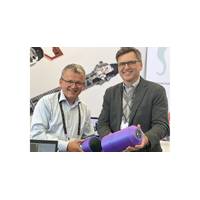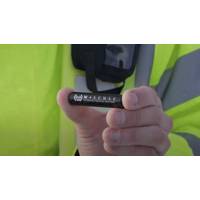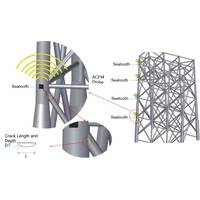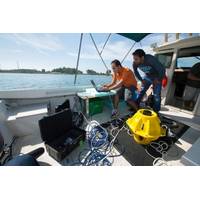
Blue Logic and Hydromea to Accelerate Subsea WLAN Deployments
accurate remote operation of subsea assets, reducing deployment risks around critical subsea assets for service companies and asset owners.The benefits of the partnership include:Accelerated WLAN Deployments: The integration of inductive and FSO technologies enables rapid, flexible setup of subsea wireless networks, supporting real-time data streaming and remote control of UIDs.Extreme Deployment Flexibility: The combined system works across a wide range of subsea environments, from splash zones to depths of 6,000 meters, and is suitable for both new installations and legacy infrastructure retrofits.Enhanced
CSignum Secures £6M to Advance Underwater Wireless Networks
CSignum, a provider of wireless technology extending IoT communications beneath the surface, has completed a £6 million Series A funding round. The investment will accelerate growth of its EM-2 family of products which are transforming the way critical wireless sensor data is transmitted from submerged environments to networks above. The funding round was led by Archangels, Par Equity, and Scottish Enterprise with additional investment from British Business Investment (BBI), Raptor Group, Deep Future, SeaAhead’s Blue Angel Network, and notable individual US investors. This new

Fincantieri Invests in Deep Tech Scale-Up for Naval and Submarine Sector
WSense are actively involved in the participation in additional Italian and European tenders aimed at innovation in the underwater sector, as well as in joint commercial proposals.The investment in WSense, a cutting-edge Italian center of excellence in the development of innovative solutions for wireless networks and underwater monitoring and surveillance systems, is a further building block in the Fincantieri Underwater strategy.It strengthens its position in critical technologies for underwater communication, which is a sector of growing relevance, especially in the context of dual-use applications

New Tool for Subsea Wireless Crack Monitoring
, easy to deploy wireless network solution which can be retrofitted to offshore structures and subsea assets. Seatooth ACFM units are user-configured to take readings as required, from once a minute to once per month. Seatooth ACFM can be configured as standalone sensors or within subsea wireless networks. As standalone devices, information is harvested by fly-by ROV or a diver. When configured as a wireless network on offshore platforms, real-time data is streamed wirelessly through the splash zone to an asset management control station located either on the platform or on shore

Using Subsea Technology to Drive Down Costs
, on May 18 and 19, 2016. These control and monitoring systems can increase subsea production and strengthen field economics for operators by improving asset integrity management and flow assurance. The presentation will focus on three main cost-saving solutions: Seatooth PipeLogger, Seatooth Wireless Networks and Seatooth Inclinometer. Seatooth PipeLogger The Seatooth PipeLogger can be used to measure the internal temperature, corrosion, flow, leaks and vibration of subsea pipelines without the need to physically penetrate the pipe wall. The system can be easily installed or retrofit,
SignalFire Open Architecture Remote Sensing System™ Interfaces
transport of the data to the gateway via its wireless mesh system. Because the SFRSS mesh network operates at lower frequencies, it can communicate at ranges of up to 3 miles between nodes and is significantly less sensitive to foliage, obstructions, and moisture when compared to traditional wireless networks

Awards Ceremony Recognizes NRL Researchers
the development of tactical edge network technology. His robust, efficient protocols for wireless, tactical networks are used across DoD. He has led and architected the development of next-generation, emulation-based network modeling that is key to the scientific understanding of mobile, wireless networks and critical in developing systems that have a high level of assurance in meeting mission requirements. Mr. Adamson's innovations have transitioned to a number of programs, reducing cost and directly supporting the DoD goal of deploying effective network-centric and autonomous tactical systems

Deep-sea Internet Being Developed at UB
, “The Internet Underwater: An IP-compatible Protocol Stack for Commercial Undersea Modems,” at the 8th annual International Conference on Underwater Networks & Systems. Hosted by the Association for Computing Machinery, the conference runs Nov. 11-13, 2013 in Taiwan. Land-based wireless networks rely on radio waves that transmit data via satellites and antennae. Unfortunately, radio waves work poorly underwater. This is why agencies like the Navy and National Oceanic and Atmospheric Administration use sound wave-based techniques to communicate underwater. For example, NOAA relies

MacArtney Shows Sensorbots at Ocean Business
to a masternode, is based on the theory of underwater optical networks (UON). By means of UONs, the optical signals transmitted by the Sensorbots are intelligently linked, using so called ‘multi-hop’ networking technologies, not unlike that used for cell phone and other land based wireless networks. This entails that information and data is ‘hopped’ between the nodes to overcome optical range limitations of underwater signal propagation. In essence, this means that one will be able to apply Sensorbots like strings of pearls over great distances - with full utilization of

 August 2025
August 2025





